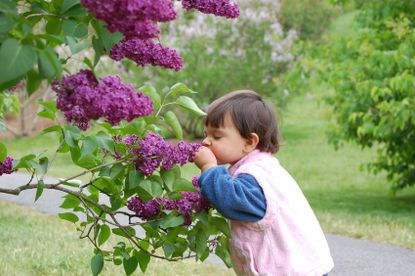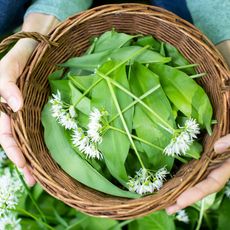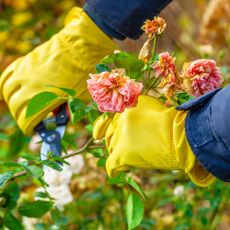How To Create ‘Scratch N Sniff' Sensory Gardens For Kids


Kids love touching EVERYTHING! They also enjoy smelling things, so why not put the things they love best together to create a 'Scratch N Sniff' sensory garden? What on earth is a 'Scratch N Sniff' garden theme? Simple. It's basically the same thing as a sensory garden, appealing to the senses - but it focuses more on touch and scent. Read on to learn more about these fun sensory gardens for kids.
Scratch and Sniff Garden Theme
A scratch and sniff garden theme not only makes a fun addition to the landscape but it affords the opportunity to become a crucial teaching element. Kids can learn about different textures, scents, and more. Watching their 'Scratch N Sniff' plants grow teaches them about plant growth and the life cycle of plants. Plant parts can even be used for craft projects. For instance, leaves and flowers can be dried and used to make fragrant potpourri. These gardens can be designed in a number of ways too. Grow them inside or outside. Make them big or small. Plants can be grown in pots, in the garden, or even on a windowsill. Whatever your child's personal preference, sensory garden ideas aimed at touchy and smelly plants abound.
Sensory Garden Ideas for 'Scratch n Sniff' Theme
Here are some ideas for inclusion in your touchy-feely section of the Scratch N Sniff garden:
- Create a little rockery with stones of various sizes, shapes, and textures - from small to large, round to square, and smooth to rough.
- Add a water feature, be it one that moves, trickles, or bubbles.
- Use different textures for walkways like paving slabs and crushed gravel. Use a variety of mulch options such as bark, pebbles, sand, etc.
- In addition to plants, include different types of screening like bamboo or lattice fencing.
There are all kinds of plants suitable for a curious child's exploration. While it's obvious that there will be some visual impact associated with the range of shapes, patterns, and colors, try to focus on choosing plants with fascinating textures - furry/woolly, soft, and silky. Bumpy, tickly, and prickly (but stay away from plants that might cause injury.). Smooth, spongy, and playful. Even sticky or wet plants, like sundew, aquarium plants, and algae, make wonderful additions to this garden.
Plants for a 'Scratch and Sniff' Garden
'Scratch N Sniff' plants to include are:
Furry, soft and silky plants
Bumpy, tickly, and prickly plants
- Blue fescue
- Northern sea oats
- Fennel
- Purple fountain grass
- Roses
- Purple coneflower
- Sea holly
- Hens-and-chicks
- Pampas grass
- Tickle me plant
- Ferns
Smooth, spongy and playful plants
Scented herbs and edible plants
To make this sensory garden even more appealing, add in some smelly plants. Many herbs and other plants have scented foliage, and their aromas can be released by gently rubbing the leaves. Scents in plants vary greatly, as the way in which we perceive them. Some may be delightful; others deplorable. Include them all. Some good aromatic choices to include are:
- Various mint varieties
- Curry plant
- Thyme varieties
- Sage
- Chamomile
- Lemon balm
- Lavender
- Sweet Annie
- Orange tree
- Lemon tree
- Garlic
Aromatic flowering plants and trees
- Honeysuckle
- Scented geraniums
- Lily of the valley
- Roses
- Sweet peas
- Heliotropes
- Chameleon plant (colored foliage smells lemony)
- Lilac
- Chocolate flower
- Ginkgo tree (rotten egg smell)
- Voodoo lily
- Stinking hellebore (aka: dungwort)
- Dutchman's pipe vine
Gardening tips, videos, info and more delivered right to your inbox!
Sign up for the Gardening Know How newsletter today and receive a free download of our DIY eBook "Bring Your Garden Indoors: 13 DIY Projects For Fall And Winter".

Nikki Tilley has been gardening for nearly three decades. The former Senior Editor and Archivist of Gardening Know How, Nikki has also authored six gardening books.
-
 Forage For Herbs: 7 Tasty And Safe Wild Herbs To Pick Close To Your Own Backyard
Forage For Herbs: 7 Tasty And Safe Wild Herbs To Pick Close To Your Own BackyardIn addition to growing your own herbal staples, did you know there are several wild options out there that are safe and tasty – and free? Try foraging these 7 wild herbs
By Amy Grant
-
 Should You Cut Back Roses In The Fall? – When To Prune Your Prized Shrubs For Winter
Should You Cut Back Roses In The Fall? – When To Prune Your Prized Shrubs For WinterDiscover whether to cut back roses before the onset of winter – or to leave plants alone until spring.
By Melanie Griffiths